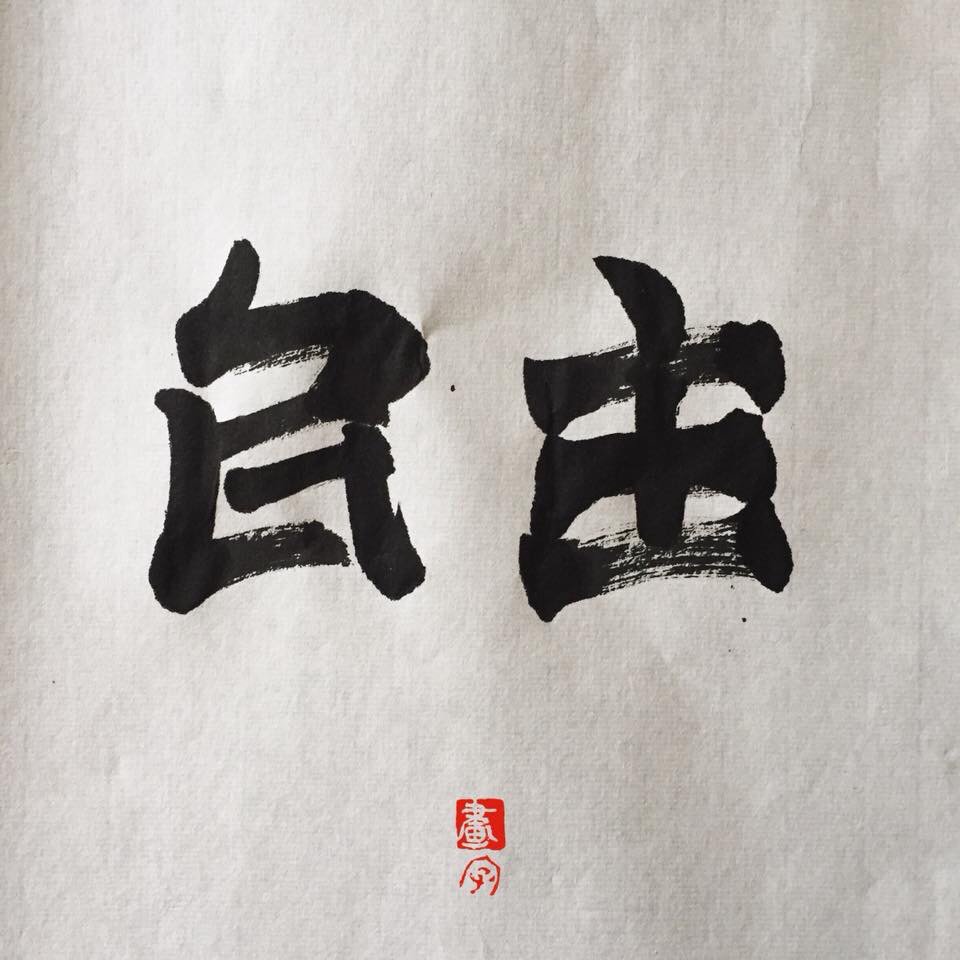I'm strikin' it
Poster advertising a citywide strike in Hong Kong:

(Source — with many other examples of powerful protest art from Hong Kong)
Read the rest of this entry »
Poster advertising a citywide strike in Hong Kong:

(Source — with many other examples of powerful protest art from Hong Kong)
Read the rest of this entry »
We just posted on a calligraphic ambigram that means both "go" and "Hong Kong": "'Go Hong Kong!'" (6/12/19). Here's another one that does not require rotation:

(Source)
Read the rest of this entry »
Whether in English or in Chinese (Xiānggǎng jiāyóu 香港加油!), "Go Hong Kong!" has been blocked and censored on the Chinese internet because of the massive protests against the hated extradition bill that Xi Jinping is trying to force upon the city. However, through the magic of Chinese calligraphy, there's a way to get around the ban against this cheer:
Read the rest of this entry »
Klaus Nuber writes: "Sometime ago I saw the sign of this 'Asia Palast' with the logo consisting of the two chairs and the round dingus between. Is this logo just cute or has it a hanzi background?"
Read the rest of this entry »
For International Women's Day, Google made one of its doodles — this one with quotations from various women from around the world. Each is given its own distinctive typography. Several languages and scripts appear.
Read the rest of this entry »
I recently became aware of a viral new meme in China, but didn't know what it meant or even how to pronounce it. The characters are 盘他, which superficially, literally would seem to mean "plate him / her / it". Of course, that doesn't make sense, so 盘他 flummoxed me for quite a while.
Since the expression seemed so alien and odd, I thought that maybe the second character had a special topolectal pronunciation and would have pronounced the whole expression as pán tuō, but that was just a wild guess, and it wasn't long before I learned that the term should be pronounced "pán tā", the usual way for those two characters.
I still didn't know what "pán tā 盘他" meant.
Read the rest of this entry »
From the Los Angeles Loyolan, the student newspaper of Loyola Marymount University:
Read the rest of this entry »
I learned this term from an important article by David Bandurski in today's (10/17/18) The Guardian, "China’s new diplomacy in Europe has a name: broken porcelain: Beijing’s message to Sweden and beyond – criticise us, and we’ll topple your agenda – won’t win it any hearts and minds".
The relevant Chinese expression is pèngcí 碰瓷, which literally means "bump porcelain" (think pèngpèngchē 碰碰车 ["bumper cars"]). How did pèngcí 碰瓷 ("bump porcelain") become embroiled with diplomacy and international politics?
Read the rest of this entry »
In the middle of last month, I participated in a double book launch by Cambria Press in Singapore (links here, here, and here). The event was held at one of Singapore's most outstanding art galleries, called iPreciation (links here and here). This is what I saw as soon as I walked in the door:
Read the rest of this entry »
Japanese artists depicted almost anything imaginable concerning humans, animals, and the natural world, and they did so with great skill and emotional power. One sub-genre of Japanese painting that I recently became aware of is that of the fart battle (hōhi gassen 放屁合戦):
"21 Classic Images Of Japanese Fart Battles From The 19th Century", by
Read the rest of this entry »
Henry Cooke (aka "prehensile" on GitHub) has hatched a fascinating techno-artistic experiment. He set up two Amazon Echos to talk back and forth, each repeating a text to the other, with every iteration introducing new errors. His initial inspiration was "I Am Sitting in a Room," a 1969 work of acoustic art by Alvin Lucier, in which a text is recorded and re-recorded until all that is left is the hum of resonant frequencies in the room. (You can watch a 2014 performance with Lucier here.) Rather than replicate Lucier's text, Cooke created new ones for the two Echos to vocalize, with an added wrinkle: iterations of the texts follow the Oulipo S+7 constraint, in which each noun is replaced by another noun appearing seven steps away in the dictionary. You can see the first ten iterations (using Amazon Polly to synthesize different voices) in this video.
Read the rest of this entry »
On the weekend of January 19-20, 2018, there was a Tangut Workshop at Yale University. Organized by Valerie Hansen and sponsored by the Yale Council of East Asian Studies, this was an intense, exciting learning experience for the 35 or so people who were in the room most of the time.
Many readers may be scratching their heads and asking, "Tangut? What's that? And why should we at Language Log be concerned with it?"
Read the rest of this entry »